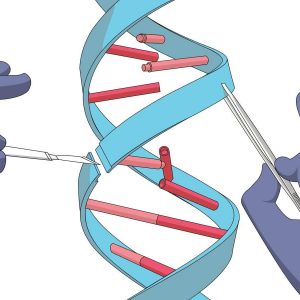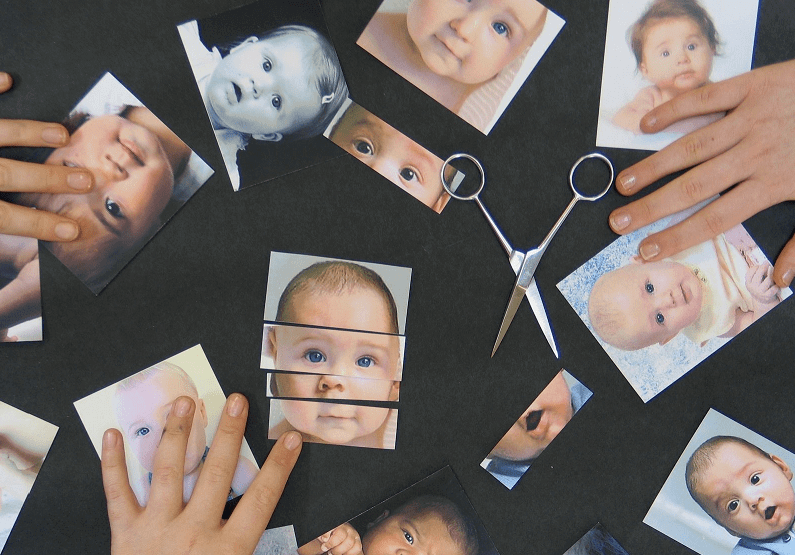“Eugenics is the science of improving the human species.”
In the late 19th century, British scholar Francis Galton introduced and propagated his theory of eugenics. Galton urged European and American governments to attempt to improve the human race by ‘breeding out’ undesirable traits. Eugenics was carried out in several ways: forced sterilization, legal policy preventing procreation and legal segregation of populations.
Galton’s ideology was widely accepted in American society. In 1896, the first legal eugenics policy was implemented by Connecticut. The state government made it illegal for epileptic individuals to marry in an attempt to prevent any epileptic offspring. From 1909 to 1979, California was a leader in the eugenics sterilization process. For 70 years, the state allowed and encouraged the sterilization of its mentally ill population in order to create its conception of a perfect human race.
Participation in eugenics practices is not limited to the state’s past, however. In 2010, at least 148 women were forcibly sterilized in California prisons. Doctors of the California Department of Corrections and Rehabilitation sterilized these women without lawful consent. In order to have the procedure done, women are required to first lawfully consent through the completion of an approval form acknowledging the lasting effects of the procedure. All 148 cases were found to be lacking legal consent; the documentation either had been falsified or was missing entirely from hospital records.
The eugenics movement in California never ended, and now is once again being propagated by modern scientific advancements; there is a modern eugenics movement on the rise.
The development of CRISPR technology and the increased prevalence of prenatal testing allows for potential elimination of undesirable human characteristics. These technologies are the future of a eugenics movement in the United States and, more specifically, in California. As these developments open what could be a new chapter in California’s complicated relations with eugenics, scientists, activists and policymakers alike have grappled with its realities: Is there a moral line to be drawn regarding the implementation of these technologies? Without limitations, will these technologies perpetuate a legally validated acceptance of eugenics?
Prenatal testing is largely accredited by the American medical community as a helpful tool of pregnancy, preparing expecting parents for potential health challenges their child may face. It can accurately predict the presence of Down Syndrome, cystic fibrosis, heart defects and other genetic variations. The American College of Obstetricians and Gynecologists publicly urge all women to undergo prenatal testing. It’s framed as a ‘noninvasive blood test’ that will provide women with important information about the fetus. Prenatal testing is a prized technological advancement and has become widely accepted in American society.
What, then, are the downsides to prenatal testing? In Iceland, approximately 100% of fetuses found to have Down Syndrome are aborted. Prenatal testing has essentially wiped out the existence of Down Syndrome within Icelandic society; it has allowed for the elimination of a supposedly ‘undesirable’ human trait. By using this predictive technology to effectively eliminate an entire portion of their population, prenatal testing has had unprecedented success as a tool of modern eugenics. A similar statistic is reflected by the United States: around 67 percent of fetuses that are detected by prenatal testing to have Down Syndrome are aborted.
Lax abortion laws aid in the abortion of detected ‘disability’ when combined with prenatal testing. In comparison to other states, California has some of the least restrictive policies regulating abortion. This isn’t necessarily a negative thing. California provides women control over their bodies and gives them accessible options for determining their personal future with childbirth. It does, however, bolster the modern eugenics movement. Due to the accessibility of abortion, ‘undesirable’ traits and disabled populations can easily be eliminated in California to create an idealized human race.
Can we morally justify the elimination of individuals with Down Syndrome or other disabilities? How do we determine, as a society, what human genetics are undesirable? Well, historically, the modern eugenics movement aimed at eliminating minority races and mental illness from American society. As the conversation around race and mental illness was reformed, eugenics science was gradually discredited and declared morally unsound. Eugenics was more publicly shamed and denied in the 1940s, after it was revealed that Nazi Germany had propagated an ideology for the elimination of the Jewish people. There was a public conversation and an agreement that this justification was unsound. Systematically killing people for their beliefs, race and mental illnesses became unacceptable as the conversation shifted.
That same conversation still needs to be had about modern disability. Is it morally sound to eliminate the existence of what we currently consider ‘disability’? The only legal limitation to the eugenics movement is the 1978 Federal Sterilization Regulations, which attempted to prevent the sterilization of mentally ill women, without consent from the individual. There has not been enough public conversation around eugenics, and for that reason, the problem has continued to fester – the forced sterilization that occurred — within California in 2010 was met with alarmingly little public awareness, let alone outrage, regarding the issue.
Another technology that could potentially aid the modern eugenics movement was recently developed at the University of California, Berkeley. CRISPR-Cas9 is a technology that employs the enzyme cas9 to essentially act “like a pair of molecular scissors, capable of cutting strands of DNA.” It has been used to cut out genomes and cure disease in animals and plants. CRISPR trials with human beings are expected to begin soon.

This technology has the potential to be incredibly helpful to humanity’s continued existence; it can end disease fatality by cutting out effected genomes. But could it also be used to perpetuate a eugenics movement? Some critics suggest CRISPR could potentially be used to create ‘designer babies’ by effectively cutting out any trait deemed undesirable. Although most scientists agree that this technology won’t be accessible to the public for quite some time, there needs to be an ethical conversation concerning this topic before the technology can be implemented.
Will there be any policy limiting the future implementation of CRISPR technology? There is none currently proposed, but bioethic activists and scientists say “a public dialogue over the social, ethical and legal implications with the regulatory needs of the system is necessary.” CRISPR could be used to fundamentally alter genetics to be ‘better’; unregulated, CRISPR could be the foundation for an expanded eugenics movement.
What would a modern eugenics movement mean for the future of humanity? This is a controversial issue; there is no legal or cultural uniformity about the ‘desirability’ of human characteristics. There is, however, a cultural connotation to ‘disability’. The current conversation of disability in American society is almost entirely negative. Disabled individuals are characterized by media as burdensome. In 2016, the President of the United States (then, the Republican nominee) even mocked a disabled journalist; perpetuating, on a worldwide stage, the discrimination towards people with mental/physical differences.
An outside perspective often overlooks the beauty in disability and the benefits that disabled persons bring to society. Organizations, like RespectAbility, have begun to challenge normative standards and push public boundaries on acceptance of difference. RespectAbility encourages a more positive conversation about disability. The conversation around disability is also being challenged by researchers hoping to publicize the daily lives of people affected by disability. In April of 2016, the American Journal of Medical Genetics reported that 87 percent of families affected by Down Syndrome are prideful and loving of the individual with genetic difference. Families reportedly felt that, contrary to public belief, Down Syndrome “enriched” their lives. They, along with many others, are starting a movement of acceptance.
If in 30 years, the traits we currently consider ‘disability’ are no longer viewed as limitations, would our current actions be viewed as a resurgence of the eugenics movement? We are in relatively uncharted territory in this moral debate, but it seems history is repeating itself with the slightest of variation. American society once saw mental illnesses like epilepsy as a severe limitation of human ability and attempted to eliminate an affected population. This, as we now see, was a horribly destructive and unjustifiable practice. Unfortunately, the discourse surrounding disability in America has not been fleshed out enough in the public sphere. The future of genome-editing has been heavily criticized by leading disability-rights activists but, as one activist said, “as a person with a disability, she didn’t want to continue spending her life’s work validating her own existence.” This important discussion is being had among disability right activists, it’s just not being heard by the public.
There are extreme moral implications to the modern eugenics movement that are being overlooked by the American public. The conversation regarding the moral implications of prenatal testing, and now CRISPR technologies, is long overdue in the United States. While these technologies should be explored, as they are overall beneficial to humanity, there must be more nuanced approaches to their regulation that consider America’s complex history with eugenics.
Feature Image Source: Genetic Literacy Project





One Comment